San Francisco International Film Festival Week 1 Roundup

Arlin is an all-around film person in Oakland, CA. He…
It’s April once again which can only mean one thing: the abundant blooming of jasmine. Are you smelling all that jasmine out there? Gotta get me a jasmine plant… But if April means two things, then it’s the blooming of jasmine AND the San Francisco International Film Festival. That’s right, two weeks of side-eye from bringing my bike on bart during commute hours, mad dashes across the bay area, and very irregular eating patterns, so at the end of it I should look great!
In its 61st year, the festival is the longest running in the US and as such the programming is always stellar. This year, I wanted to really take advantage of as much of it as I could a step ever so slightly outside of my purview of documentaries and Jodorowsky films. In putting together my schedule I made it a point to try and do something I almost never do in my regular theater-going: take chances. In doing so, the first week I attended almost all of the venues and saw films in the Bay’s three major cities. How good an idea was that I wonder?
Doing a festival this way is an exciting and fulfilling experience, but it’s also a mostly solitary one. As such, I’ve felt hyper aware of people attending screenings as a group like healthy people with real lives. As such, I’m including some stray conversations I overheard and made enough of an impression on them that I remember them now.
My first screening of the festival was held at SFMOMA, where the bathrooms are pulled straight out of The Shining.
The Price of Everything (Nathaniel Kahn)

An examination on the invention and superficiality of the modern art market, the Nathaniel Kahn‘s film offers healthy doses of late-capitalist absurdity. Nearly everyone involved seems to agree that the obscene sums of money that have come to define the market are incongruous with the objects around which they revolve, but all seem powerless, and fewer willing, to stop it. Kahn makes lots of challenging and amusing observations, he just has a tendency to make them repeatedly. The film may have been better served as a Lauren Greenfield short, but is worth seeing if only for presenting the dichotomy of processes between Jeff Koons and Larry Poons.
I was sitting behind some people who seemed to be artists of some kind, and throughout the film were offering such valuable insights as drawing parallels between Koons and Trump and making sure everyone around them knew that they knew the subject of Maurizio Cattelan‘s sculpture Him 10 seconds before it was revealed in the film. After the screening I was jettisoned out into a persistent drizzle that would see me soaked by the time I got home.
Generation Wealth (Lauren Greenfield)

Speaking of Greenfield, here new film was possibly my most anticipated of the festival. Following up an all time great work like The Queen of Versailles is never an easy feat, and it’s doubly challenging when you’re widening your scope to decades.
Greenfield‘s retrospective of her career documenting ostentatious wealth performance is both a societal check-in and personal analysis. For a good portion of the film the director turns the lens back on herself and her relationship to the maladies so apparent in her stunning body of work. In doing so, some of the arguments of the film lose a bit of sharpness, but all the same it is another fantastic portrayal of the poison that is American affluence.
I saw this film through a screener (I was too excited to wait), so I didn’t get any impressions of the crowd. The next day I would spend my whole rainy evening at the Yerba Buena Center for the Arts, where one can play modernist ping pong while they wait for films.
The Distant Barking of Dogs (Simon Lereng Wilmont)
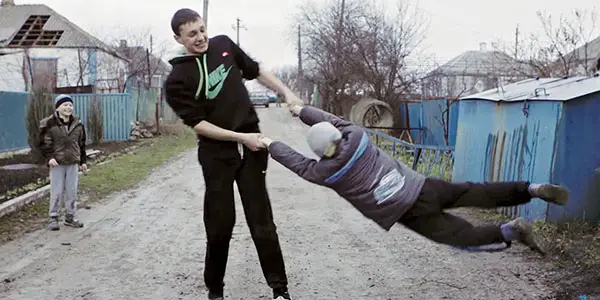
A new entry in the canon of films that deal with childhood during wartime, Simon Lereng Wilmont new documentary opens with dashcam footage of a roadside bomb, setting the stakes for the characters we will come to follow over the next 90 minutes. 10 year old Oleg family lives within constant earshot of guns and explosions taking place in the battlefield in Eastern Ukraine. Wilmont wisely takes a reserved approached, creating a naturalistic portrait with beautiful framing. The film is a testament both to how dark circumstances can never fully suppress childhood, while clearly imprinting itself upon a child for life.
Before the film the man sitting next to me was mansplaining the work of Kiarostami to his friends’ wife with pitch-perfect condescension. It is here that I’m reminded that I am consistently one of, if not the, youngest person at these screenings, and I have a healthy patch of grey on the side of my head.
☆ (Johann Lurf)

The most updated iteration of Johann Lurf’s continuing experimental piece is a compilation of cinematic depictions of, well, stars. Even though there’s no change in subject, except for the occasional cloud or shooting star, the range of depictions vary wildly, raising the question of subjective experiences and presentation of objective truths. A sort of Everything Is Terrible with a celestial focus, ☆ is a hypnotizing work using dialectical montage to draw the viewer into an act of participation and contemplation, in effect approximating the experience and wonder of actually looking up at the night sky.
This screening, though it had a number of walkouts, felt like the type of film major festivals should prioritize over things that will be out on Netflix in a month or two; a challenging work with little to no distribution that would be difficult to watch in a proper theater on any other occasion. I think that also helps to explain why this was the first time there may have been people in the audience younger than I.
City of the Sun (Rati Oneli)
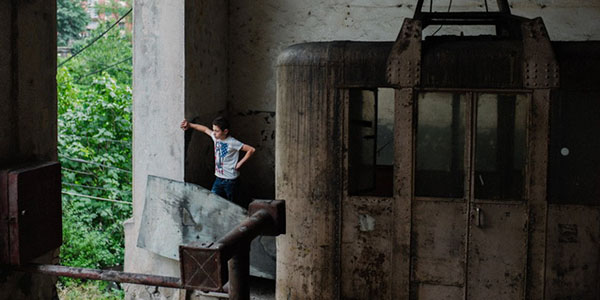
Rati Oneli‘s feature debut is a bold work of understatement, prioritizing framing and mood over narrative and character. Examining life in Chiatura, Georgia, the ghosts of the city’s once booming precious metal mining industry constantly haunt the film. It’s a beautiful, and at times frustrating film, but it features one of the best single shots I’ve seen so far at the festival, of a cow in a hole. Gargantuan constructions loom over and are knocked down by inhabitants, who seem largely to have turned to the arts in place of inner mountain drudgery. In that way it’s a film about how “life, uh…finds a way” even when all around it seems to have died.
A group of men in front of were were excitedly talking about going out for a crazy night of drinking after the film. Once it was over, they seemed to have retained none of their enthusiasm.
Three Identical Strangers (Tim Wardle)

Tim Wardle‘s theatrical feature doc debut is a one-of-a-kind psychological thriller, and by that I mean that it’s not simply an exciting head trip, though it’s that too, but is also literally a thriller dealing with the field of psychology.
Sure to appeal to armchair ethicists, Wardle very cleverly lets the narrative of the film unfold bit by bit, never giving away too much and carrying you satisfyingly to the next revelation. Told mainly through interviews and supported by whatever kind of footage best suite the story at any given moment, it excels at positioning the viewer in the position of its subjects, creating a remarkable work of empathy.
Won’t You Be My Neighbor? (Morgan Neville)

Won’t you let me go five minutes without tears streaming down my face? Morgan Neville‘s new profile of the revered public television personality revels in relentless sentiment. The director wisely eschews the usual life-in-a-doc format, choosing rather to stick to Rogers‘ work and letting let reveal some biographic elements. Some might level claims of nostalgia-porn at Neighbor but I was much more so a product of the type of children’s programming specifically derided in the film and multiple times felt myself overcome by the wholesome sincerity of the segments on Neighborhood. After knowing very little about the man and his life’s work, I came away feeling like Roger’s will remain forever singular, too pure for this world.
I think some of the attendees at this screening may have been partaking in some day drinking as any of the great bars around us in the Mission, as before the film started it was feeling a little raucous. However, it didn’t take long at all before everyone seemed enraptured by the film, placated by that welcoming tone as they were in their childhoods. Even still, there was still someone behind me supplying very SF reactions, such as gasping and proclaiming “oh my god” when it was stated that Rogers was a lifelong republican, and bragging to a friend that she knew the baby in some archival child research footage.
After that it was a mad dash to the Castro, where I was delighted that famed organist David Hegarty wasn’t taking the festival off in order to provide the soundtrack for me to admire the greatest exit signs at any of the festival venues.
Searching (John Cho)
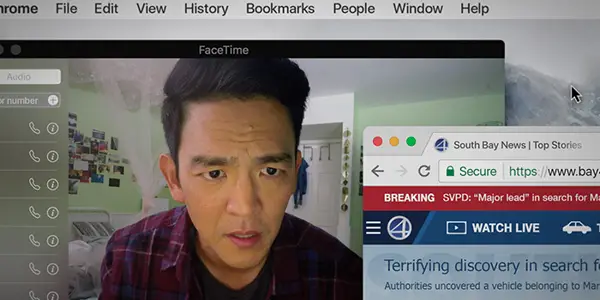
Word on the street was that Aneesh Chaganty‘s debut was a bold formal experiment for the internet age. However after watching John Cho trapped inside various computer screens for 100 minutes it felt more like a Scooby Doo mystery directed by M. Night Shyamalan dressed up in techno-festishm.
The formulaic mystery and gratuitous over twisting might’ve been forgiven if the film had anything to say about the devices that define it, but it all ends up being window dressing for a film that slips into cliché so easily. Add in that the whole thing revolves around the male experience of female pain and it just makes it really difficult to walk away feeling good about this movie, despite its moving Up-esque opening.
I had a large gap between Searching and my first screening of the “Dark Wave” program at the Roxie, and filled it with a large burrito from Papaloté.
Revenge (Coralie Fargeat)

Coralie Fargeat‘s feature debut dutifully recreates the exploitation films that made the rape revenge a regular storytelling trope. I was pretty surprised to find that the film seemed to have little to no subversion of this problematic genre, thoroughly brutalizing Vanessa Hessler‘s (albeit wonderfully acted) protagonist with seeming glee and taking plenty of opportunities to frame her butt divorced from the rest of her body .
The only thing I could think of is a sort of mirroring of the male gaze, placing it upon Aurélien Muller‘s notable behind (which was usually included with the rest of him), but overall the film really sticks to the tropes of the genre with the result being a slog through a well worn formula with little to no variation, other than brief pauses to be really gross. I just found myself waiting for the inevitable, feeling when it came only relief that it was over.
This guy behind kept laughing at what seemed like really inappropriate moments.
Hal (Amy Scott)
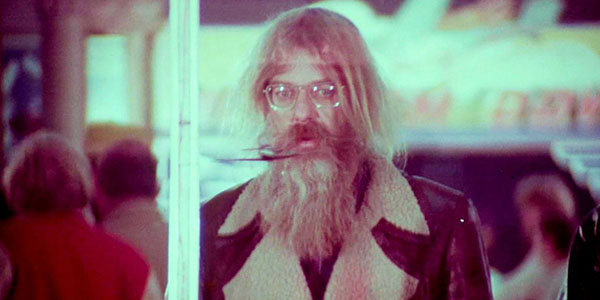
Amy Scott‘s dutiful overview of the life and work of cinema’s great humanist-stoner-maverick Hal Ashby is mostly a paint by numbers affair. Featuring interviews with those who knew Ashby best and supported by clips from his impressive body of work, the film succeeds in creating interest about this arguably overlooked director, even if it refuses to do anything formally that might match or step up to its subject.
The film is ultimately satisfying, but with a near total lack of archival footage and interviews with people who, though influenced by his work, never knew the man, the film can feel like it’s more around Ashby than about him. I dare you not to get Cat Stevens stuck in your head after though.
I had very little time to bike over to the Castro from my next screening, and sped from the Mission as fast as my rickety old Schwinn would take me. I hastily locked up at my normal rack on 17th and squeezed in just in time.
Salyut-7 (Klim Shipenko)
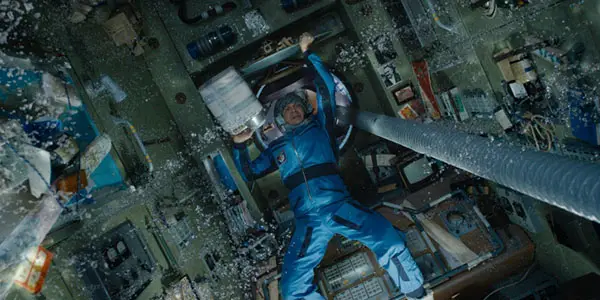
Russian director Klim Shipenko‘s new film will play to American audiences much like a soviet-tinged Apollo-13. In telling a similar story of a space mission that succeeded against incredible odds during the cold war, Salyut-7 burns though practically very cliche of the “space mission crisis” genre; tense conversations between mission control and cosmonauts, setting up their family’s on earth as the stakes for which they strive, and a series of “suspenseful” near-catastrophes that threaten the success of their mission. Despite all of this the film succeeds on its heart and technical wizardry. The space station scenes are particularly mesmerizing, with some great shots from the station towards Earth.
As I left the theater and prepared to head to Berkeley, I came upon something horrifying, a man toying with a tennis racket sitting on the curb next to my bike. In and of itself, that would probably not be cause for alarm. But as I went to unlock my bike I discovered the unmistakable truth; I had committed perhaps the greatest sin of my life. In my haste to get to the Castro I had accidentally snagged the brake cable of the bike parked on the other side of the rack with my lock, effectively stranding the owner of that bike in front of the trolly stop until I had finished reveling in soviet space exploration. Knowing for certain that I was easily the biggest POS to ever walk this planet, I apologized profusely while also speeding towards the East bay as quick as I could. I will never be able to forget or overcome this moment, it is certain to haunt me until the day I die, joining the coterie of thoughts that intrude into my consciousness during the wee hours of the morning, keeping me from sleep.
My immense shame propelled me to downtown Berkeley fast enough to force some sustenance into me, enjoying a chicken pita from The Halal Guys and a scoop of mint chocolate chip (one a chocolate dipped rainbow sprinkled safety cone) from the Bay’s only reasonably priced ice creamery, John’s Ice Cream. Then it was off to the legendary Berkeley Art Museum and Pacific Film Archives, whose lower level offers the most high-pressured water fountain of any of the venues.
First Reformed (Paul Schrader)
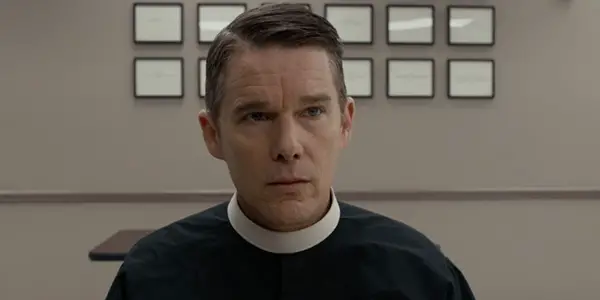
The new Paul Schrader joint is a classic “late-period” work, prioritizing aesthetic and mood over the writer/director’s signature flash and violence. Set in suburban New York, the film is a refreshing emotional plea for swift and meaningful climate action. Its central conflict is internal, dealing with how one can do anything productive in the face of unfathomable existential despair.
It’s an area rich for mining and one I’m sure we’ll see more of as the future described in parts of the film comes more into fruition. The formal elements all create enough interest and subversion that it keeps the message from ever feeling too preachy and one the nose. Right now this is my favorite fictional feature so far this year.
Schrader was in attendance and indulged us all in a Q & A. I asked him about the consistent use of voice over in his films. He said that he loves it because it’s the direct delivery of information to the viewer, but noted that it can only be successful if it is both present from conception, and if the delivery in completely uninflected. A couple of other choice quotes: When asked about the film’s use of 4:3 “There is no such thing as fast meditation. It’s all about withholding. How do you use boredom as an aesthetic tool and not lose your audience?” And responding to a question about the difference between occupying different components of film authorship “There’s nothing more humbling than the realization that your film is f*cked up, and you’re the one that f*cked it up.”
Half the Picture
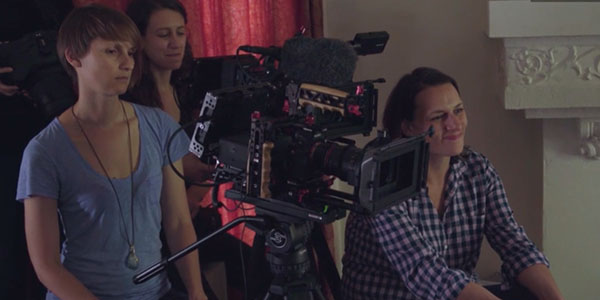
A film as timely as it is needed, Half the Picture offers a remarkable survey of female film directors from different generations and disciplines discussing the vast and unjustifiable gender disparity in their profession. However, the volume of directors interviewed is immense and the way in which those discussions are assembled felt unfocused and overwhelming. This is such a big issue that Amy Adrion does her film a disservice by trying to cover it all. Just Maria Geise‘s story alone could occupy an entire feature documentary, as could gender discrimination, women in television, or the topic of female documentarians. In trying to be all-encompassing, I found it to be a film that scratches the surface and smooths over complexities and nuance.
The screening was held at the Children’s Creativity Museum, which a delightful new venue to the festival hidden behind a merry-go-round. Before the screening they were giving out free luna bars, which I’m definitely not complaining about and ate readily, but, you know, a little on the nose. I was delighted to overhear the conversation of three women who were just so in love with Won’t You Be My Neighbor. After the screening I darted down market to the Castro for my first and only live program of the festival. And some PTSD at the bike rack.
A Celebration of Oddball Films with Marc Capelle’s Red Room Orchestra
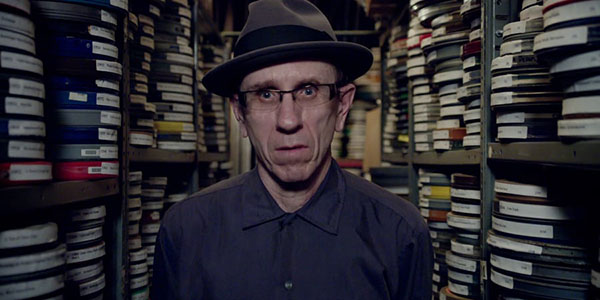
Oddball Films founder Stephen Parr was literally the first person I met when I moved to the Bay. I had been working in Chicago as a commercial video vault manager, and it seemed like my skills would transfer nicely to being Stephen’s assistant. We set up an interview over email for the day after I drove in, and when I made my way to Capp St. I passed the building multiple times because it was so unassuming. When I finally figured it out, I bemusedly wandered up a long set of stairs and onto a warped hardwood floor with most of its square footage dedicated to floor to ceiling shelves loaded with reels. When I sat down, Stephen very matter of factly told me that I was too late as he had hired a new assistant a week before.
He did however invite me to email him for a free ticket to attend any of his regular curated programs at the Archive, and I regrettably only took him up on it once. It was a program called “lasers” and featured experimental films, animation, corporate and instructional videos, recovered archival material, basically anything that could end up on 16 mm, all having to do with lasers, lights, prisms and rainbows, and all with Stephen himself managing the projectors.
It was an impressive program and one tinged with the aura of pre-tech San Francisco I never had the opportunity to experience. I always intended to go back, but for whatever reason never did. As I got to meet more people in the film scene here, I was given the impression that it was probably for the best that I arrived here a week late, but it was clear that in way or another Parr had touched the lives of everyone in the Bay Area film community.
So it was a no-brainer that this would be the live program I chose to attend. It promised not only to be a singular night of entertainment in one of the city’s most iconic venues, but also a chance for me to rectify my error in never attending more programs at Oddball.
I wasn’t familiar with the Red Room Orchestra, but they seemed to really get the spirit of the Oddball Archive, and performed to a wide sampling of films from the collection. My favorites were Dream of the Wild Horses, which consisted of a series of slow motions shots of horse galloping through and diving into water, accompanied by the musical stylings of a squeeky balloon, and an informational film about selecting the right sunscreen, accompanied by a disco-tinged cover of Charlie’s “Spacer Woman”. It was a serious bop.
The night was a great reminder of the immense value of physical film archives and I hope that current director Tara Lee Ford is able to continue the acquisition, preservation, and (especially) exhibition of works that would otherwise go forever lost and unseen.
Mercury 13 (Heather Walsh & David Sington)

Looking at pioneers that should have been, Heather Walsh and David Sington‘s new documentary celebrates the bravery and perseverance of a group of female pilots, any of whom had the opportunity to become the first pilots in space, would the gate have been opened to them. The standard interview/archival formal structure is broken up in scenes of both beautiful aerial photography and surreal sequences meant to represent to sensory deprivation experience. The film is a testament to the acute fragility of masculinity, particularly ironic here as these were men pushing the boundaries of human thought and experience.
After the screening, I came back to the office to catch up on the emails I missed, listen to “Spacer Woman” on repeat, and type these last couple of entries. Now I’m off to the Grand Lake Theater in Oakland for that M.I.A. doc.
MATANGI / MAYA / M.I.A (Stephen Loveridge)
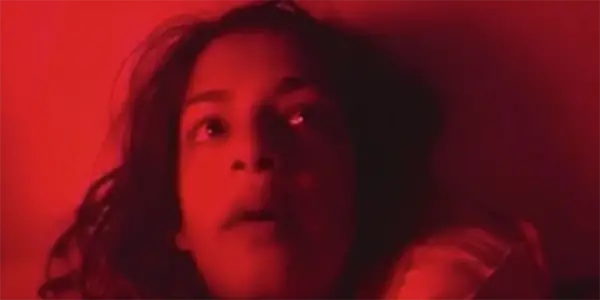
Why wait for a pop star to die to examine their origins and celebrate their art? Because of the abundance of footage from throughout its subjects life which make the film possible, MATANGI / MAYA / M.I.A plays more than a bit like Amy. The main difference being that its star has been able to resist the crushing implosion of unexpected fame, and this film is a part of that resistance. Though credited to director and friend Stephen Loveridge, this is really Maya’s film, as she’s been self-consciously documenting her life since adolescence. As such, it’s a very self-conscious effort to reclaim her biography from those who have attempted to mold it. This refreshingly throws the burden of objectivity out the window, and frees the film to be an entertaining essay on celebrity and integrity.
Overall, my thighs are pretty sore and I’m tired all the time! Week 1 has been as packed as I could reasonably make it, and as far as the films I’ve seen right now I’d say that I’m pretty thoroughly whelmed. The coming next week is very heavily loaded, featuring anticipated docs like Shirkers, The Judge, Minding the Gap, and The Cleaners, as well as the hometown premiere of Boots Riley’s Sorry To Bother You. I’m pretty jazzed for it all, and for the sweet sweet embrace of sleep, right after I type this last sentence. This one. Good night. Talk soon. Love you. K, sorry, good night for real.
Does content like this matter to you?
Become a Member and support film journalism. Unlock access to all of Film Inquiry`s great articles. Join a community of like-minded readers who are passionate about cinema - get access to our private members Network, give back to independent filmmakers, and more.
Arlin is an all-around film person in Oakland, CA. He received his BA in Film Studies in 2010, is a documentary distributor and filmmaker, and runs Drunken Film Fest Oakland. He rarely dreams, but the most frequent ones are the ones where it's finals and he hasn't been to class all semester. He hopes one day that the world recognizes the many values of the siesta system.













